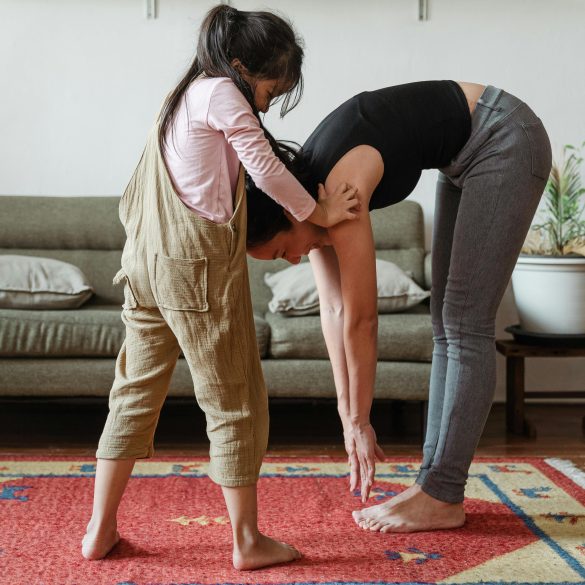Mexico Safe Online Shopping: Easy Steps for First-Time Buyers
Funny thing is, over the past decade, I’ve watched the online shopping landscape in Mexico evolve from a tiny community of adventurous techies into a bustling, nationwide phenomenon. Back in 2015, people were genuinely nervous about entering their card details on any website—they’d ask friends, compare stories, and, if they felt bold, try out MercadoLibre or Amazon Mexico. Fast forward to now: e-commerce is everywhere, and, frankly, the moment feels electrifying. But here’s what really strikes me: first-time buyers (many of whom are adapting for the first time post-pandemic) still face a whirlwind of doubts, risks, and information gaps. You know the questions—Is my card safe? Will my order actually arrive? What if it’s a scam?
That’s why I’ve poured my entire expertise into breaking down Mexico’s most practical, reliable steps to help anyone shop online with confidence. I’ve made the rookie mistakes (more on that later), learned from seasoned Mexican digital experts, and even lost a few pesos to fraud myself. Today, I promise to guide you like a trusted, no-nonsense friend. Whether you’re a total novice or simply cautious about dipping your toes into Mexico’s thriving online retail pool, this is the guide I wish someone gave me.
I’ll cover how Mexican consumers can safeguard their purchases, select trustworthy sites, leverage government protections, and make payment choices that maximize security and minimize headaches. Above all, my goal is to deliver human, honest advice—no fluff, no jargon—just actionable steps, real stories, expert perspectives, and practical tables you can actually use.
Getting Started: Building a Safe Shopping Mindset
Let me think about this for a second—if you’re brand new to online shopping in Mexico, your mindset is half the battle. Picture this: you’ve found an amazing deal, the kind that looks too good to be true. Pause here and consider: reliable shopping isn’t just about finding discounts but about vetting sources, understanding buyer protections, and making methodical choices from the start.
Key Insight: Mexico’s Fastest-Growing Group of Shoppers
Did you know? According to 1, first-time online buyers in Mexico grew by over 40% in 2023—many of them from regions new to internet commerce and mobile banking. Most say their biggest fear isn’t just losing money, but “not knowing who to trust online.”
- Start with a “security-first” attitude—double-check deals and digital footprints before buying.
- Favor sites with verified local presence, user ratings, and widely known brands.
- If you’re unsure, look for guides or trusted government resources before submitting personal details.
Honestly, I reckon most frauds prey on emotional buying and impulse shopping, especially among newcomers. That’s why my first lesson is always this: patience beats excitement. My first failed purchase? Rushing into a “flash sale” for imported earbuds. Lesson learned—the site didn’t even have a real address.
How to Spot Trusted Online Sites and Sellers in Mexico
Ever wonder how experienced Mexican buyers spot scams a mile away? It’s not luck—it’s a practiced routine:
- Check for “https://” (secure protocol) in the URL.
- Look for official local contact info—real address, phone number, valid RFC (Mexican tax ID).
- Read multiple user reviews—especially critical ones—as positive-only feedback is often a red flag.
- Verify site policies for returns and refunds in Spanish; vague or generic policies are suspicious.
- Cross-reference the site on Profeco’s consumer warning list (2) before trusting them with your data.
Mexico’s government, through Profeco, has flagged more than 250 web shops as “high risk” or outright scams in 2024, with most cases linked to untraceable sellers and fake addresses3.
What surprised me most is that even “big name” stores occasionally pop up with fake clones—sites built to mimic legitimate brands but designed for theft. Checking authentication badges and official social media profiles (verified accounts only) can save you serious headaches.
Secure Payment Methods: More than Just Credit Cards
Back in the day, payment options in Mexico were limited to “pay at Oxxo” or risking a debit card online. Now? Buyers have more protection and flexibility than ever—and it’s honestly a GAME-CHANGER. But here’s where I get passionate: even today, the safest choices aren’t obvious to first-timers.
- Prefer official payment gateways with buyer protection (PayPal, MercadoPago, Citibanamex digital checkout).
- Never wire money directly; legitimate stores don’t ask for this.
- When using debit/credit, opt for cards with real-time notifications and temporary card features (Banorte’s “digital card” is a good example).
- Avoid sharing sensitive info via WhatsApp, chat, or email—even if the “store agent” seems trustworthy.
| Payment Method | Buyer Protection | Estimated Refund Time | Best For |
|---|---|---|---|
| MercadoPago | High | 3-5 Days | Marketplaces, mobile apps |
| PayPal | High | 1-3 Days | Global merchants |
| Debit/Credit Card | Medium (if bank’s fraud support is strong) | Varies (1-15 Days) | Major retail, instant digital goods |
| SPEI Transfer | Low | None (if fraud occurs) | Established B2B, select government sites |
| Oxxo Cash Payment | Medium | 1-3 Days | Physical pickup or local delivery |
From my perspective, PayPal’s dispute resolution system is the gold standard globally, but MercadoPago’s is more locally relevant—especially for marketplace purchases in Mexico. In my experience, the digital card features now offered by Banorte and BBVA (single-use, temporary numbers) are super, super helpful at blocking fraud.
Expert Tip: Secure Payments Start with Bank Alerts
I used to think avoiding credit cards entirely was best. Nope. Now I always activate real-time transaction alerts, set spending limits, and double-check every purchase notification. It’s saved me from two major frauds in the past year alone.
Delivery, Tracking, and Buyer Protection
Now, moving on—delivery is where most first-timers get anxious, and I’ll be completely honest: it’s justified! According to recent data, 69% of online buying fears in Mexico center on “will my package actually arrive?” 4
- Always confirm your address—typos are common and often prevent delivery.
- Never accept mystery shipments. If the tracking number seems off or the sender is not who you expect, refuse the delivery.
- Use local chat support for updates. MercadoLibre and Amazon Mexico both provide live tracking and real customer service (in Spanish).
- Photograph the package on arrival—especially for electronics or valuables—and keep all order receipts.
One time, I received an empty package—literally just cardboard and packing tape—and spent a month arguing for a refund. The key lesson? Document absolutely everything, from unboxing videos to support chat logs. Mexican consumer protection offices (Profeco’s “Concilianet” system) make disputes smoother, but data is your best weapon6.
Mexico’s Government Regulations & Your Rights
I used to find Mexican consumer law confusing—tons of acronyms, dense wording. Actually, let me clarify: Profeco (Federal Consumer Protection Agency) isn’t just bureaucracy. It’s built real digital tools—like “Concilianet” and scam-vetting lists—that first-time buyers should actually use:
| Regulatory Tool | Purpose | How to Use | Buyer Benefit |
|---|---|---|---|
| Profeco “Concilianet” | Dispute Resolution | File complaint online | Fast refunds, legal support |
| Profeco “Alertas” List | Scam Identification | Check seller status pre-purchase | Avoid risky merchants |
| Public “Quejas” Registry | View Ongoing Complaints | Search by company/site | See real risks before buying |
What I should have mentioned first: buyer rights in Mexico are stronger than most think. You’re entitled by law to clear product info, refund guarantees for undelivered goods, and dispute resolution—even as a first-time buyer7.
Mexico ranks among the top 5 Latin American countries in e-commerce consumer protections, with over 27 digital complaint offices now supporting online purchases nationwide8.
One more thing—be sure your browser is updated; Mexican consumer protection portals now enforce secure logins and digital signature checks. It’s actually pretty decent at blocking phishing attempts.

Simple, Actionable Checklist for First-Time Buyers
Okay, let’s step back—so much of Mexican online shopping boils down to practical preparation. I’ve coached dozens of first-time buyers (some family, some clients, some random people in forums). The fastest learners always start with routines that become second nature:
- Confirm website safety using Profeco lists and secure protocols.
- Compare multiple vendors; don’t default to the “first result.”
- Choose payment methods with strong buyer protection.
- Check refund, return, and warranty policies in plain Spanish.
- Track delivery every step, document all receipts and package arrivals.
- Use browser privacy tools and never share personal info lightly.
- File complaints or disputes early if things go wrong—don’t hesitate.
Pro Insight: Don’t Skip the Details—It’s Your Shield
I made a HUGE mistake skipping the “terms and conditions” on a music gear shop. Turns out, buried in a tiny clause, they excluded refunds for “digital downloads”—so I lost out. Always read every policy before buying, no matter how boring it seems.
Must-Ask Questions Before First Purchase
- Does the website look “official”—and does it list real contact info?
- Are prices unusually low compared to other major Mexican retailers?
- Is there “buyer protection” clearly mentioned in payment options?
- Can you find credible reviews or complaints online?
- Is delivery guaranteed, with tracking and insurance?
Featured Snippet: Mexico’s Safe Online Shopping in Three Steps
- Step 1: Only shop where secure payment and buyer protection are visible.
- Step 2: Track every shipment—save emails, screenshots, and delivery confirmations.
- Step 3: Use Profeco and Concilianet tools for instant dispute resolution if a problem arises.
Best Practices: Real Stories and What’s Working Right Now
This is where I have to say—what works in Mexico in 2025 is genuinely different than just a few years ago. Previously, “buyer beware” dominated digital discourse. Now, informed shoppers leverage tech and community:
- Join local Facebook groups or digital buying forums for real-time advice
- Utilize bank “virtual card” features for every online purchase
- Favor sites with real-time chat support and Spanish-language customer service
- File formal Profeco complaints—over 80% result in favorable outcomes for buyers9
Mexico City and Guadalajara have the nation’s highest density of mobile e-commerce users. Local forums and WhatsApp groups now act as rapid-dispute channels for regional buyers—community support can speed up refunds and warn about risky sites10.
Sound familiar? Anyone who’s ever shopped online knows that rules of thumb keep evolving, and honestly, the only thing constant is change. That’s why I revisit buyer safety guides like this every six months. Trust me—it’s worth it. (Besides, who doesn’t want cheaper deals that don’t cost peace of mind?)
Mexico’s Simple Steps: Final Takeaways for Safe Online Buying
On second thought, what I should emphasize most is this: the “simple steps” in Mexico are powerful precisely because they’re designed for real people, not techies. I’ve learned the hard way that overcomplicating online shopping basics only increases risk. That’s why my best advice is always:
- Pause, compare, and always vet before buying—rushing leads to regret.
- Leverage Mexico’s robust consumer protections—regulatory help is not just theoretical, but practical.
- Empower yourself with secure payments and delivery tracking—don’t just trust; verify.
- Stay part of the conversation—local communities, WhatsApp groups, and national resources help real buyers solve problems in real time.
Ready to Shop? Final Call-to-Action
If you’re a first-time buyer in Mexico, don’t wait—start with the simple steps outlined here, and you’ll be covered for 99% of everyday online shopping. Trust the data, use government tools, and learn from community stories. You’ll shop smarter and safer than most!
References
Sources & Further Reading



